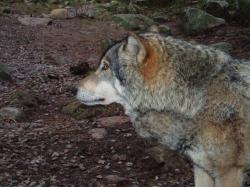The Wolf
On the Scandinavian Peninsula, which includes Sweden and Norway , the wolf has been kept at low numbers during the 19th and 20th centuries. Since 1966, the grey wolf has been fully protected in Sweden, a time when <10 wolves were assumed to remain on the Scandinavian Peninsula. During the 1980s, the wolf population recovered slowly, even though several reproductions were observed.
Throughout the 1990s the population increased with an average annual growth rate of 20-30%. Despite a substantial increase during the last decade, the small population is still threatened and suffers from inbreeding depression. Despite the fact that the wolf population on the Scandinavian Peninsula is small, it is still growing and excerting impact on the ecosystem. Today, the breeding territories are concentrated to the south-central part of Sweden and Norway (58°-64° N), with an average density of < 1 wolf km-2.
Many conflicts arise in those areas due to competition for important game and livestock. Today, the major threat against the recovery and further growth of the wolf population is the lack of human acceptance and the negative effects of inbreeding. Therefore, it is of great importance to study the impact that wolf predation has on its prey species and the ecosystem.
Responsible for this page:
Director of undergraduate studies Biology
Last updated:
05/17/07

